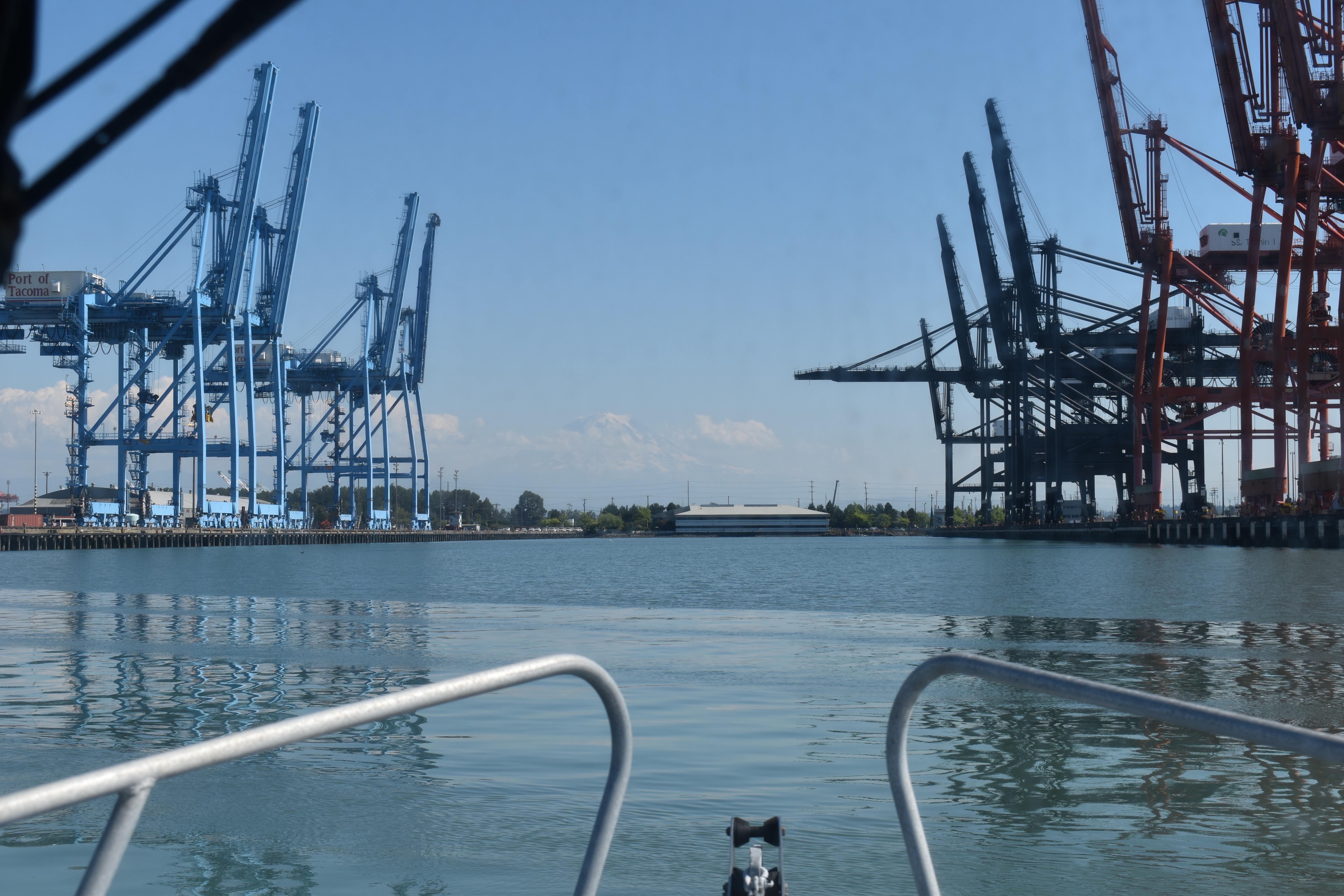
To stay economically competitive, Port of Tacoma plans to deepen the Blair Waterway
Listen
(Runtime 1:05)
Read
A new project to deepen the Blair Waterway at the Port of Tacoma will allow extra-large container ships to easily travel through the port.
Last week, the U.S. House of Representatives passed the National Defense Authorization Act, which, in part, authorized a project to deepen Blair waterway in the Port of Tacoma.
U.S. Sen. Maria Cantwell, D-Washington, said the project will keep the port competitive and provide an economic boost to the area.
“If we don’t keep pace with the trends of having more efficient ships through larger vessels that can carry more containers, then our ports and our port jobs might be overlooked in the future,” Cantwell said.
Cantwell worked to get the Water Resources Development Act, which authorizes the port project, included in the National Defense Authorization Act.
“This will help the port continue to support and grow good paying jobs and boost Washington state’s $53.7 billion export economy, ensuring the Port of Tacoma and Seaport Alliance remain a top competitor in the global trade market,” Cantwell said in a press release.
In 2015, the Port of Tacoma and Port of Seattle created the Northwest Seaport Alliance to jointly manage their operations.
The Blair Waterway project will dredge the waterway to allow larger ships to pass through. It will have to go through environmental review and consultation with stakeholders, such as the Puyallup Tribe of Indians.
The port is the site of several U.S. Environmental Protection Agency superfund sites – some have been cleaned up and others are still going through clean up efforts.
Communities for a Healthy Bay, a nonprofit that seeks to protect the environment in and around Commencement Bay and ensure the port doesn’t return to its contaminated past, raised environmental concerns about the project.
Melissa Malott, the organization’s executive director, said in a statement that her organization hopes project leaders will address those concerns during the waterway’s design and construction stages.
“We are eager to see how this project will result in a boost to economic development and good jobs,” Malott said. “While the feasibility phase of the project was underway, we expressed our concerns about environmental risks and hope they will be taken into account and addressed as the project progresses into design and construction.”
During public comments on the 2020 feasibility study of the Blair Waterway project, Erin Dilworth, with Communities for a Healthy Bay, suggested creating a plan for any newly found contaminants in the Blair Waterway project area.
According to the Feasibility Report/Environmental Assessment developed by the U.S. Army Corps of Engineers, 15 sites next to the Blair Waterway have known contaminated groundwater.
For example, the Occidental Chemical Superfund site in the port is still undergoing remediation efforts.
According to the Port of Tacoma’s website, the port and U.S. Army Corps of Engineers are studying the feasibility of using dredging material for site mitigation and nearshore restoration at the Saltchuk site in Commencement Bay.















